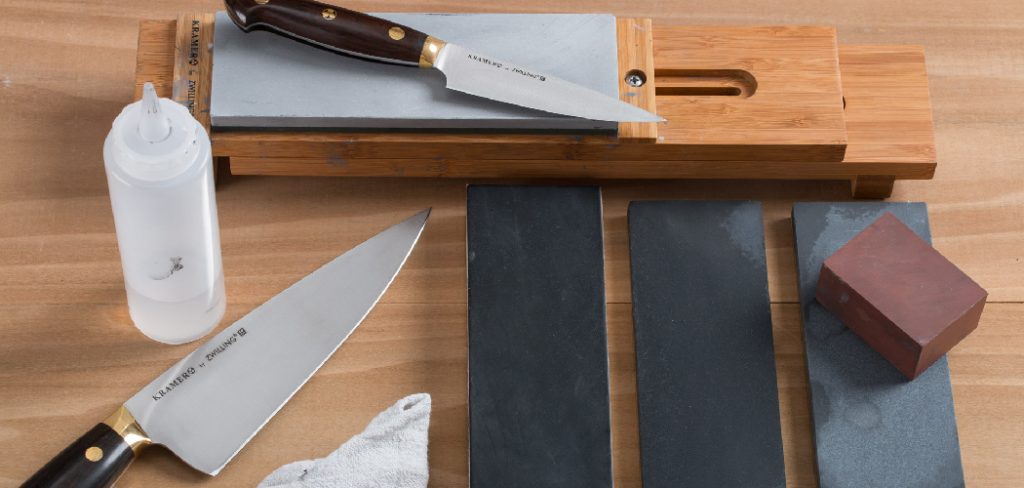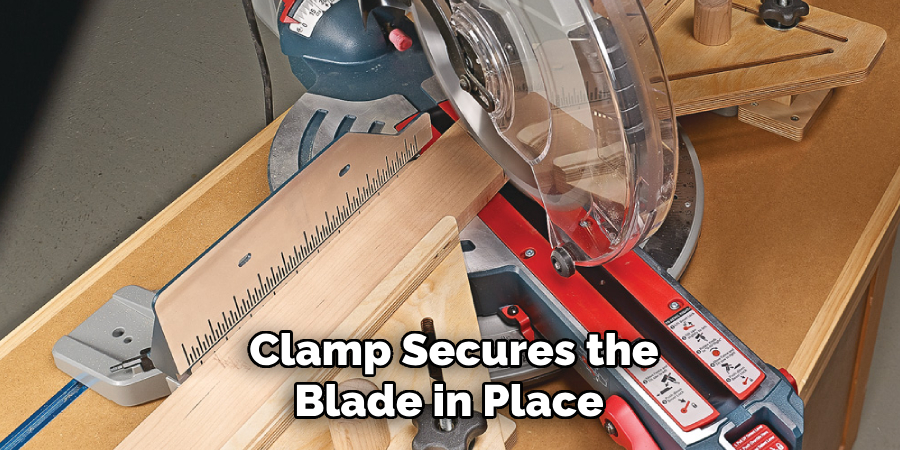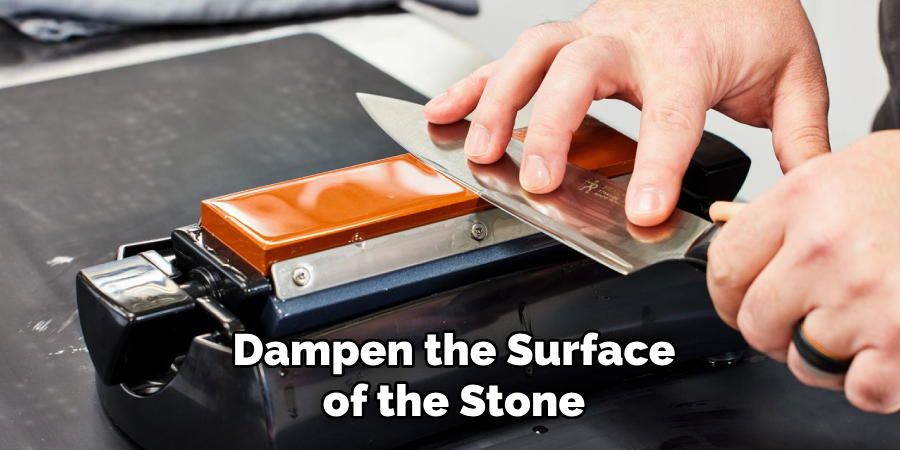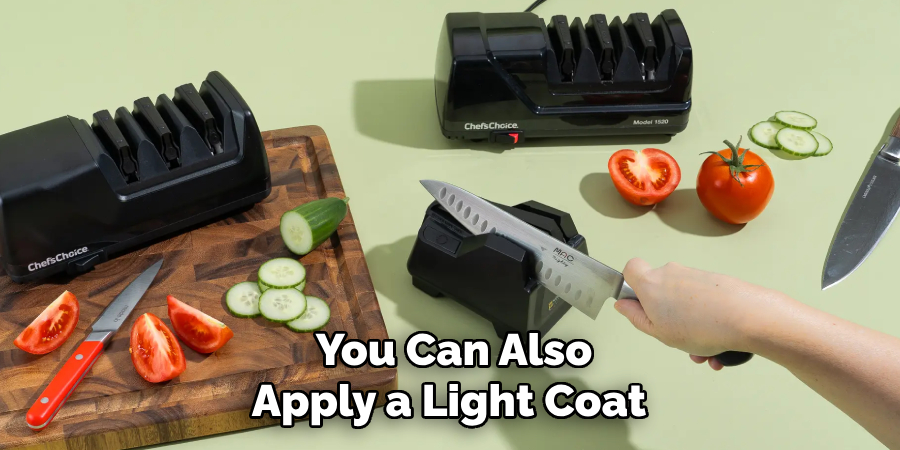The Wicked Edge Knife Sharpener is a top-of-the-line tool designed for both professional chefs and home cooks who seek precision and excellence in knife sharpening. This innovative system allows users to achieve razor-sharp edges with ease and consistency, significantly enhancing their culinary experience. Whether you’re dealing with a simple pocket knife or a high-performance chef’s knife, the Wicked Edge system offers unparalleled versatility and accuracy.

In this guide on how to use wicked edge knife sharpener, we will walk you through the step-by-step process of utilizing this sharpening system to transform dull blades into finely honed tools ready for any kitchen task. Join us as we explore the features and benefits of this exceptional sharpening solution.
Why Choose Wicked Edge?
Before we dive into the details of using the Wicked Edge Knife Sharpener, let’s take a moment to understand why it is the preferred choice for many chefs and knife enthusiasts. The main reason lies in its unique design that employs two independently moving arms with mounted sharpening stones. This allows for a more precise and controlled sharpening process, resulting in uniform edges and minimal loss of blade material.
Additionally, the Wicked Edge system offers a wide array of angle adjustments ranging from 15 to 30 degrees on each side, making it suitable for all types of knives – from hunting and fishing blades to kitchen cutlery. Its versatility is further enhanced by the ability to accommodate various types of sharpening stones, from coarse diamond stones for reprofiling to fine ceramic stones for polishing.
Needed Materials
To begin using the Wicked Edge Knife Sharpener, you will need a few essential materials:
The Wicked Edge Sharpening System
This includes the base unit with two arms and a set of sharpening stones. The system comes in different models, each catering to a specific level of precision and budget.
Knife Clamp
The clamp secures the blade in place during sharpening and ensures that it remains at a consistent angle throughout the process. It is adjustable to accommodate different blade widths and shapes.

Sharpening Stones
As mentioned earlier, the Wicked Edge system can accommodate various types of sharpening stones. We recommend having at least two grits – coarse and fine – for optimal results.
Lubrication
Using lubrication such as water or oil on the sharpening stones helps with the sharpening process by reducing friction and heat buildup on the blade edge.
10 Step-by-step Guides on How to Use Wicked Edge Knife Sharpener
Step 1: Prepare Your Knife
Begin by thoroughly cleaning your knife to remove any residual oils, dirt, or debris that could interfere with the sharpening process. You can use soap and water or a mild cleaning solution to ensure the blade is immaculate. Dry the knife completely with a towel to prevent any moisture from affecting the sharpening stones.
Once the knife is clean and dry, decide on the angle you wish to sharpen the blade based on its intended use. This step is crucial as it sets the foundation for achieving consistent and precise sharpening results.
Step 2: Mount the Knife Clamp
Once your knife is prepared, the next step is to securely mount the knife clamp on the Wicked Edge system. To do this, first attach the base of the clamp to the sharpening system’s platform, ensuring it is tightly secured. Next, insert your knife into the clamp, positioning the blade so that it is centered and balanced. Make sure the knife is held firmly in place by tightening the clamp screws; this will prevent any movement during sharpening.
Adjust the clamp so that the edge of the blade is aligned with the chosen sharpening angle, ensuring that both sides of the knife will be sharpened evenly. Properly mounting the knife clamp is essential for maintaining a consistent sharpening angle and achieving professional-quality results.
Step 3: Lubricate the Stones
Once your knife is securely clamped, it’s time to lubricate the sharpening stones. Depending on the type of stones used, you can use either water or oil as a lubricant. Dampen the surface of the stone with a few drops of lubrication and spread it evenly across using your fingers or a small brush. Remember to reapply lubricant as needed throughout the sharpening process.

You can skip this step if you are using diamond sharpening stones, as they do not require any additional lubrication.
Step 4: Begin Sharpening
Now it’s time to start sharpening your knife! The Wicked Edge system utilizes a back-and-forth motion, with each stroke covering the entire length of the blade. This ensures even and consistent sharpening results across the entire edge.
Start with the coarse grit stone and work your way up to finer grits for a polished and razor-sharp edge. Each set of strokes should be repeated on both sides until you achieve the desired level of sharpness.
Step 5: Check for Burr Formation
After several sets of strokes, check for burr formation on the opposite side of the blade. A burr is a thin metal strip formed when sharpening one side of the blade that needs to be removed for a perfectly sharp edge. To remove it, lightly run the knife’s edge against a fine grit stone in one direction until the burr disappears.
If your knife has a symmetrical grind on both sides, you can skip this step and proceed to the next grit stone.
Step 6: Clean the Stones
After completing the sharpening process with each grit, it’s important to clean the sharpening stones to maintain their effectiveness. To clean the stones, use a brush to gently remove any metal filings or stone residue that may have accumulated on the surface. You can also rinse the stones under running water or wipe them with a damp cloth to remove any remaining debris.
For stubborn residues, a mild detergent can be used; however, ensure you rinse the stones thoroughly to avoid any soap buildup. Cleaning your sharpening stones regularly will prolong their lifespan and ensure optimal performance during each sharpening session.
Step 7: Progress to Finer Grits
As you progress through the sharpening process, it’s essential to use finer grit stones for a polished and refined edge. The Wicked Edge system allows you to switch between different grit stones seamlessly, making it easy to achieve your desired level of sharpness.

Remember always to maintain steady pressure and consistent strokes when using each stone for optimal results.
Step 8: Strop for Perfectly Polished Edge
After reaching the desired level of sharpness with your finest grit stone, it’s time to add the finishing touches by stropping your knife. Stropping helps remove any residual burrs or imperfections on the blade’s edge, resulting in a perfectly polished and razor-sharp finish.
To stop, use a leather or fabric stropping compound and run the blade’s edge against it with light pressure in one direction. Repeat this process several times on both sides of the knife for best results.
Step 9: Test Your Knife
After completing all the sharpening steps, it’s time to test your newly sharpened knife! Cut through different materials to see how well it performs. You should notice a significant improvement in the sharpness and cutting ability of your knife.
If you are not satisfied with the results, you can always go back and repeat any of the previous steps until you achieve your desired level of sharpness.
Step 10: Clean and Store Your Wicked Edge System
After using your Wicked Edge system, it’s important to clean and store it properly to ensure its longevity. Thoroughly clean the stones and clamp, then dry them completely before storing them in a safe place. You can also apply a light coat of lubricant to the sharpening stones for added protection.

By following these steps on how to use wicked edge knife sharpener and regularly maintaining your Wicked Edge system, you can keep your knives sharp and in top condition for all your cutting needs! Happy sharpening!
Frequently Asked Questions
Q1: How Often Should I Use the Wicked Edge System to Sharpen My Knives?
A1: The frequency of sharpening depends on how often you use your knives and the type of cutting tasks involved. However, it’s generally recommended to sharpen your knives every 1-3 months for optimum performance.
Q2: Can I Sharpen Different Types of Knives with the Wicked Edge System?
A2: Yes, the Wicked Edge system can sharpen a variety of knives, including kitchen knives, hunting knives, pocket knives, and more. It can also be used to sharpen both straight edge and serrated blades.
Q3: How Do I Know When My Knife is Sharp Enough?
A3: You can test your knife’s sharpness by gently running your finger along the blade’s edge. If it catches on your skin or feels rough to touch, it still needs more sharpening. A properly sharpened knife should effortlessly glide through materials without any resistance.
Q4: Can I Use the Wicked Edge System for Outdoor Sharpening?
A4: Yes, the Wicked Edge system is compact and portable, making it an excellent choice for outdoor sharpening. It can be set up on any flat surface and easily transported in its carrying case. Just remember to bring along some water or oil for lubrication.
Conclusion
Using the Wicked Edge knife sharpening system is an effective way to maintain the sharpness and performance of your knives. By following the detailed steps laid out in this guide on how to use wicked edge knife sharpener, you can ensure that each knife you sharpen achieves the desired level of precision and quality. The versatility of the system allows for the sharpening of various types of blades, making it a valuable tool for any knife enthusiast.
Regular maintenance and proper storage of the Wicked Edge system further guarantee its longevity and consistent results. Whether you’re a professional chef or an outdoor enthusiast, keeping your knives in top condition has never been more achievable. Happy sharpening!
Edmund Sumlin is a skilled author for Metal Fixes, bringing 6 years of expertise in crafting a wide range of metal fixtures. With a strong background in metalwork, Edmund’s knowledge spans various types of fixtures, from decorative pieces to functional hardware, blending precision with creativity. His passion for metalworking and design has made him a trusted resource in the industry.
Professional Focus:
- Expert in Metal Fixtures : Edmund aesthetic specializes in creating durable and innovative metal fixtures, offering both appeal and functionality. His work reflects a deep understanding of metalworking techniques and materials.
- Sustainability Advocate : He is dedicated to using sustainable practices, ensuring that every fixture is crafted with eco-friendly methods while maintaining high-quality standards.
In his writing for Metal Fixes, Edmund provides valuable insights into the latest trends, techniques, and practical advice for those passionate about metal fixtures, whether they are professionals or DIY enthusiasts. His focus on combining artistry with engineering helps others discover the true potential of metal in design.


